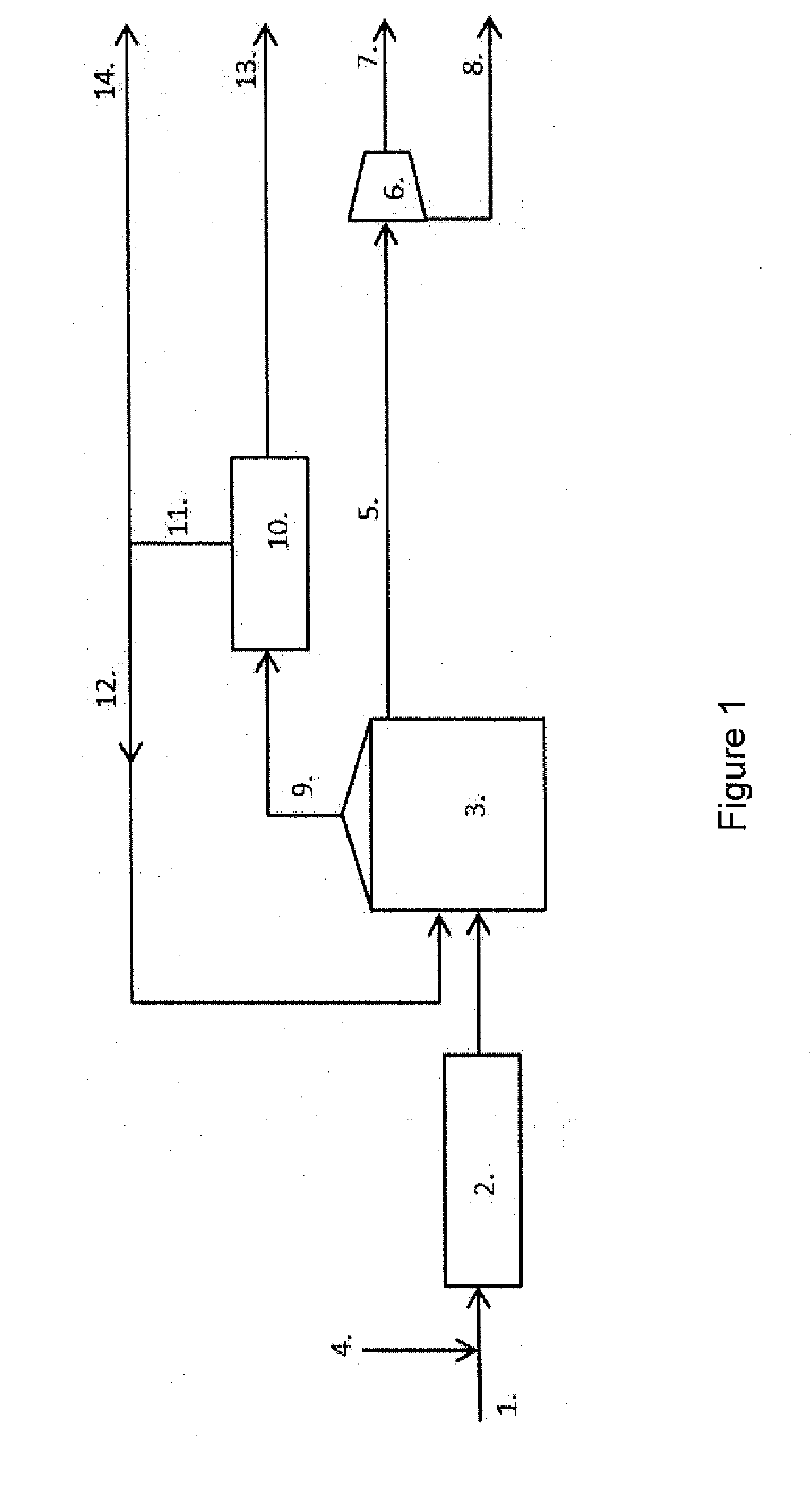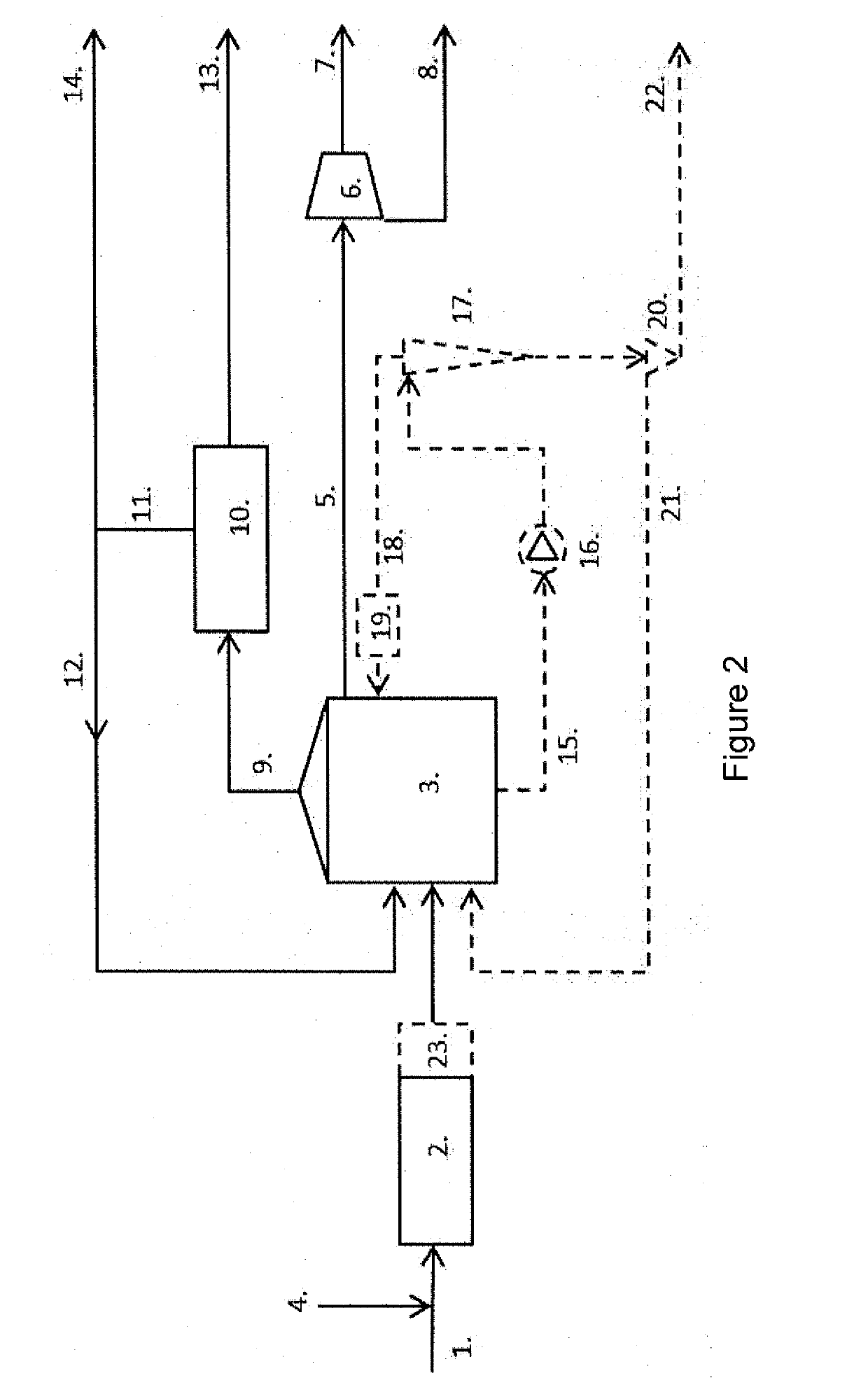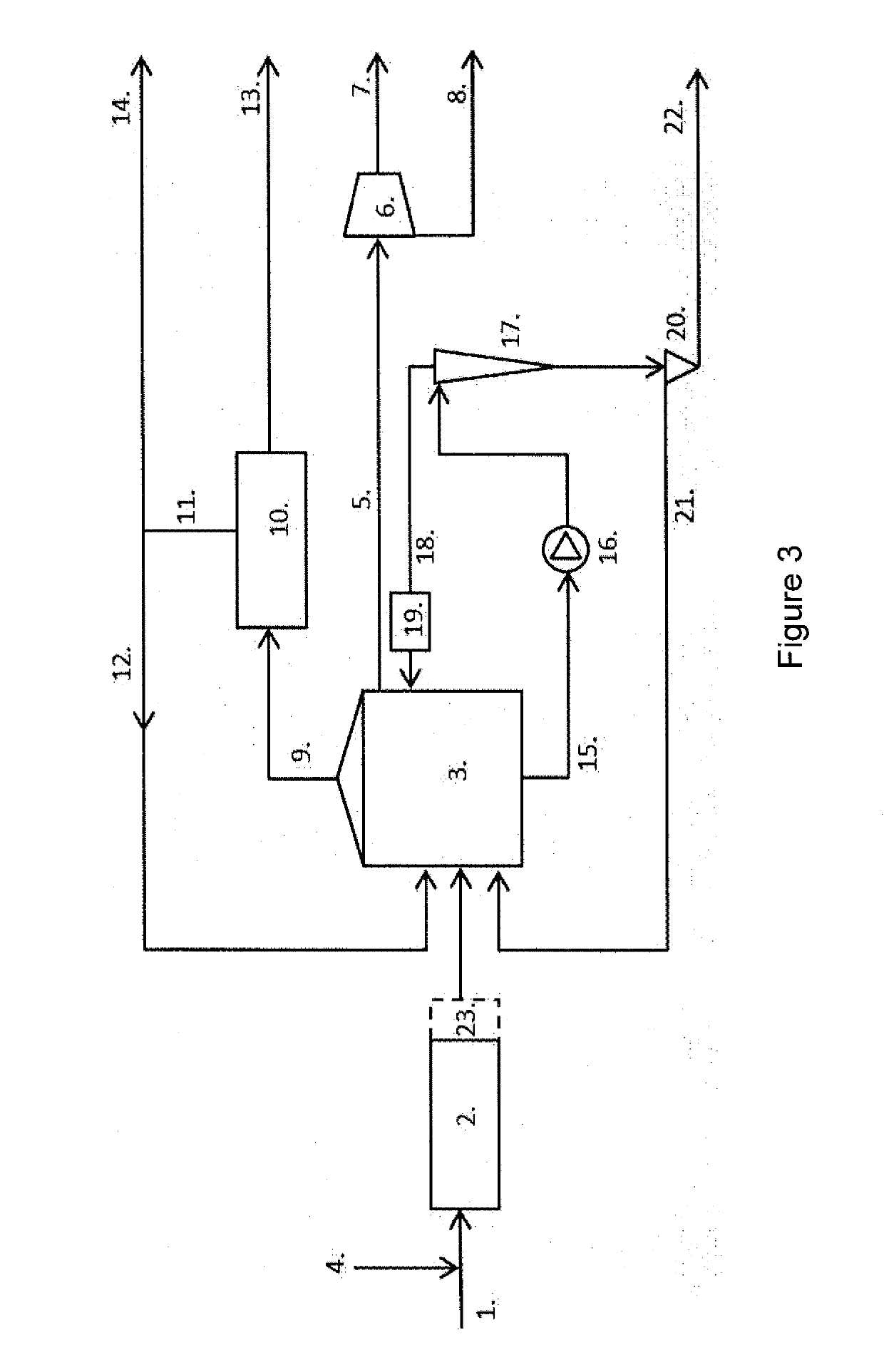Method for recovery of phosphate
a phosphate and recovery method technology, applied in the field of phosphate recovery, can solve the problems of releasing at least part of otherwise organically bound phosphorus compounds, phosphorous is a limited resource on earth, and is not uniformly distributed around the planet, and achieves the effect of reducing the concentration of magnesium ammonium phosphate (map)
- Summary
- Abstract
- Description
- Claims
- Application Information
AI Technical Summary
Benefits of technology
Problems solved by technology
Method used
Image
Examples
Embodiment Construction
[0038]The method of the present invention allows for phosphate recovery simultaneously with digesting biomass to obtain digestion products like biogas together with a solid or semi-solid digestate product usable for e.g. soil conditioning. The phosphate is mainly recovered as MAP forming an integral part of the solid or semi-solid digestate product, which may be used directly as a soil conditioner and / or fertilizer for agricultural purposes. Typically the phosphate is recovered as MAP, or hydrates thereof, as an integral part of a solid or semi-solid digestate product.
[0039]The method of the present invention specifically recover phosphate in the form of MAP included in a re-usable solid or semi-solid digestate product. In embodiments of the invention where a dewatering of the digestate product is performed the obtained liquid waste fraction have a significantly reduced phosphate content and may be processed further without any additional phosphate reducing procedures. The present i...
PUM
 Login to View More
Login to View More Abstract
Description
Claims
Application Information
 Login to View More
Login to View More - R&D
- Intellectual Property
- Life Sciences
- Materials
- Tech Scout
- Unparalleled Data Quality
- Higher Quality Content
- 60% Fewer Hallucinations
Browse by: Latest US Patents, China's latest patents, Technical Efficacy Thesaurus, Application Domain, Technology Topic, Popular Technical Reports.
© 2025 PatSnap. All rights reserved.Legal|Privacy policy|Modern Slavery Act Transparency Statement|Sitemap|About US| Contact US: help@patsnap.com



